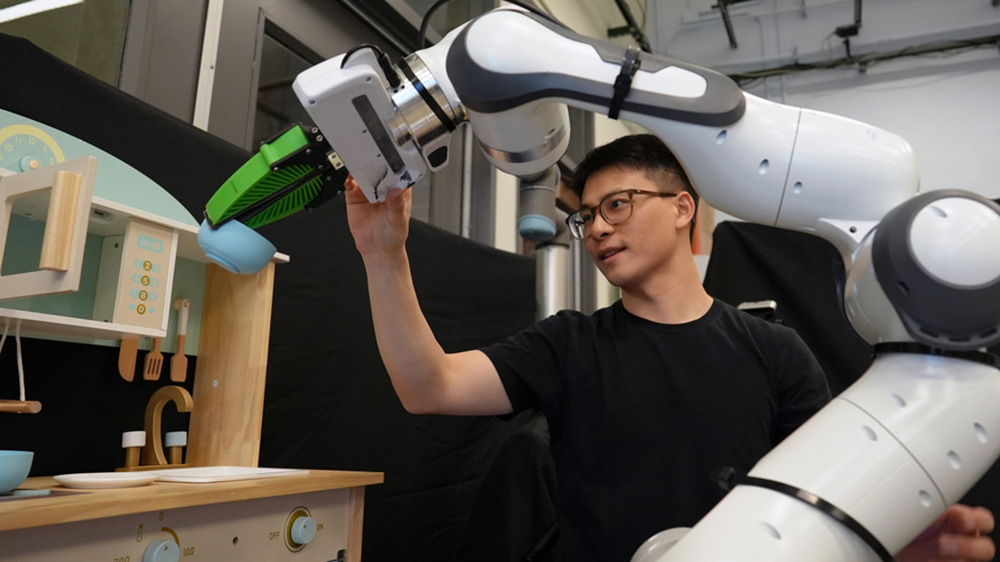Melanie Gonick, MIT
Graduate student Felix Yanwei Wang nudges a robotic arm that’s manipulating a bowl in a toy kitchen set up in the group’s lab. Using the framework Wang and his collaborators developed, slightly nudging a robot is one way to correct its behavior.
Imagine that a robot is helping you clean the dishes. You ask it to grab a soapy bowl out of the sink, but its gripper slightly misses the mark.
|
ADVERTISEMENT |
Using a new framework developed by MIT and NVIDIA researchers, you could correct that robot’s behavior with simple interactions. The method would allow you to point to the bowl or trace a trajectory to it on a screen, or simply give the robot’s arm a nudge in the right direction.
Unlike other methods for correcting robot behavior, this technique doesn’t require users to collect new data and retrain the machine-learning model that powers the robot’s brain. It enables a robot to use intuitive, real-time human feedback to choose a feasible action sequence that gets as close as possible to satisfying the user’s intent.
When the researchers tested their framework, its success rate was 21% higher than an alternative method that didn’t leverage human interventions.
In the long run, this framework could enable a user to more easily guide a factory-trained robot to perform a variety of household tasks even though the robot has never seen their home or the objects in it.
…

Add new comment